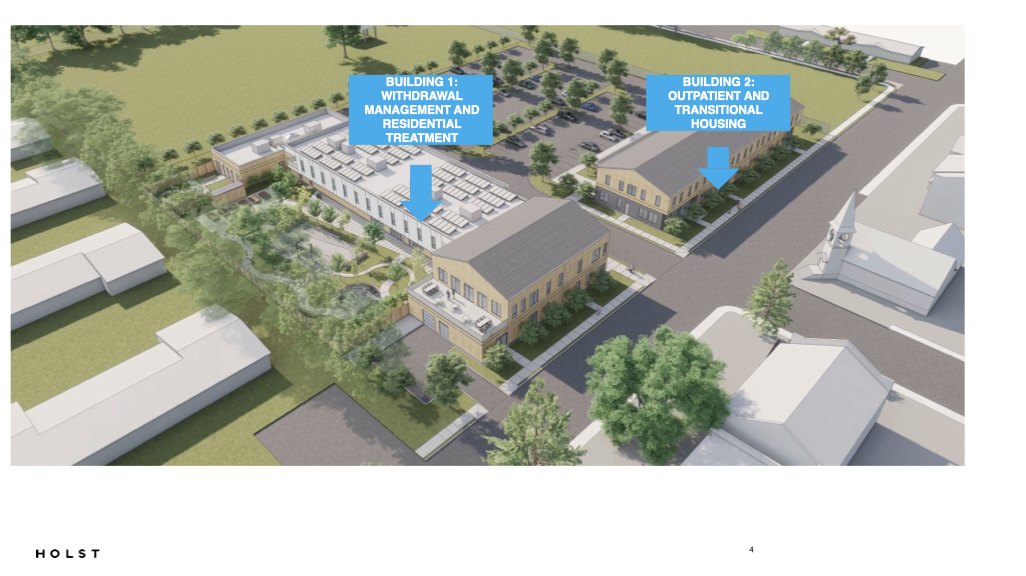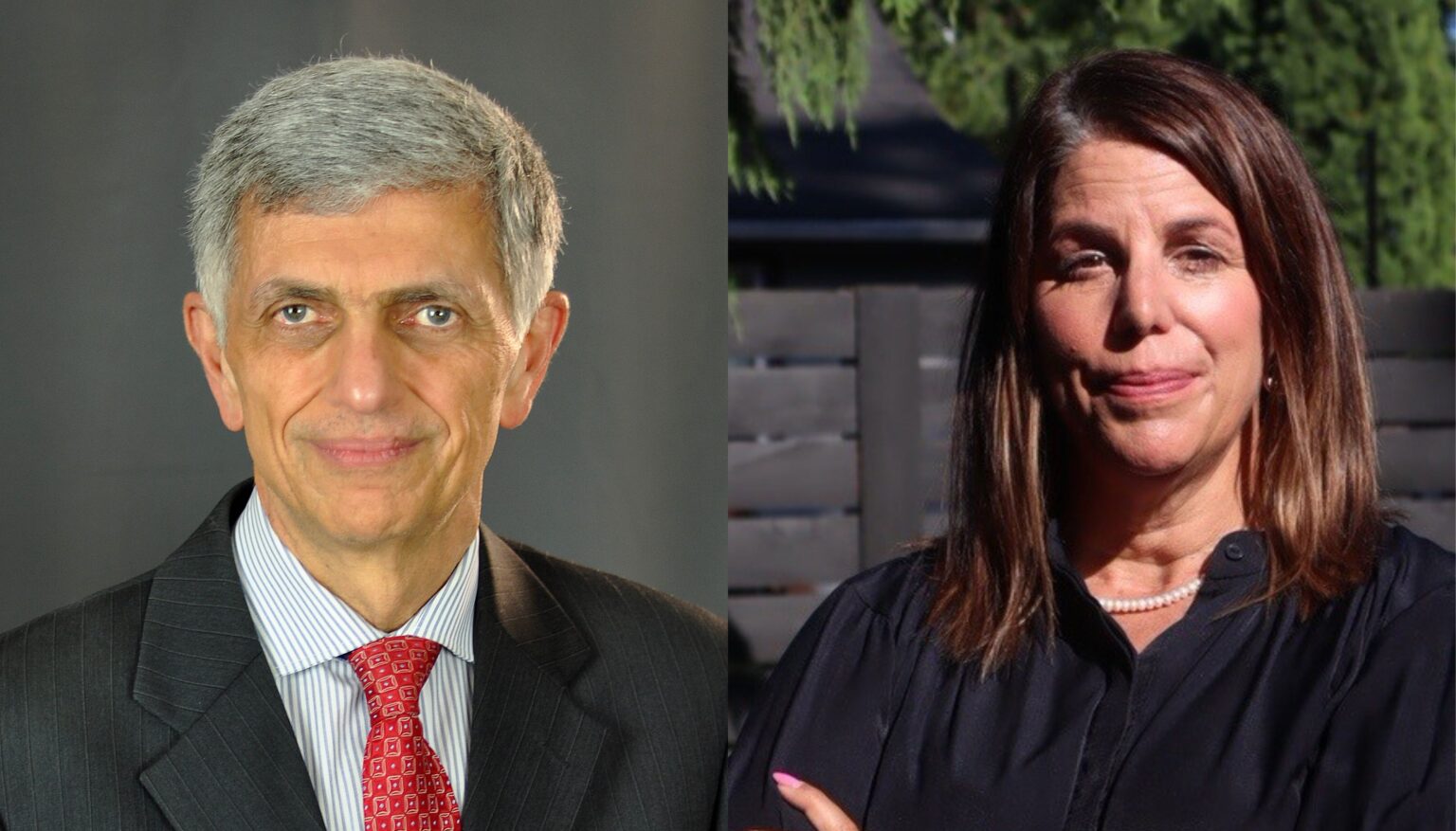Federal appeals court skeptical of cases for and against Trump tariff authority
Published 2:57 pm Thursday, July 31, 2025

- The U.S. Court of Appeals for the Federal Circuit, pictured July 31, 2025. (Photo by Ashley Murray/States Newsroom)
WASHINGTON — Judges on the U.S. Appeals Court for the Federal Circuit questioned the legality of President Donald Trump’s sweeping emergency tariffs Thursday as the White House pushes on with its Aug. 1 deadline for import taxes at levels not seen since the 1930s.
The case originated from consolidated lawsuits brought by a handful of business owners and a dozen Democratic state attorneys general who argued the president does not have the authority to impose tariffs under the International Emergency Economic Powers Act, or IEEPA.
Through nearly two hours of questioning Thursday, the 11-judge panel probed whether the president could use IEEPA authority to set tariffs without approval from Congress.
Trending
The U.S. Department of Justice’s Brett Shumate argued the law is “one of the most powerful tools” to protect the economy and national security during emergencies.
Oregon Solicitor General Benjamin Gutman, who argued on behalf of the Democratic states challenging the tariffs, maintained Trump’s reason behind declaring the unilateral emergency tariffs — U.S. trade deficits with other nations — did not actually merit a national emergency.
Trump became the first president to trigger tariffs under the 1977 law when in February and March he ordered punitive import taxes on products from Canada, Mexico and China after declaring illegal fentanyl smuggling from those countries a national emergency.
The president took his tariffs worldwide in an April executive order that declared trade deficits an emergency and slapped what he described as “reciprocal” import taxes on nearly all foreign goods.
In late May, the U.S. Court of International Trade sided with Democratic attorneys general from Oregon, Arizona, Colorado, Maine, Minnesota, Nevada and New Mexico, as well as the business owners from across the country, including in New York, Pennsylvania, Utah, Vermont and Virginia.
The word ‘tariff’
Judges on the panel grilled Shumate about how IEEPA grants the authority to impose tariffs.
Trending
“A major concern that I have is IEEPA doesn’t even mention the word tariffs,” said Judge Jimmie V. Reyna, adding that Congress “certainly was aware about tariffs” when it wrote the law.
Existing laws already create “a highly structured … framework” for tariffs, said Reyna, who was appointed to the bench in 2011 by President Barack Obama. “You would agree with me that those statutes do pertain to tariffs?”
“Correct,” replied Shumate, the assistant attorney general for the Justice Department’s Civil Division.
Pressed again by Reyna on “tariff” not appearing in the statute, Shumate said “I don’t think that’s unusual.”
“There are at least two examples of statutes that authorize tariffs that don’t use the word ‘tariff’ — Sections 232c and 122, which authorize the president to restrict imports,” Shumate said.
Judge Leonard P. Stark, who was appointed in 2022 by President Joe Biden, jumped in with skepticism.
“Both of those are part of the code that deals expressly with customs and duties, unlike IEEPA, which is not in that chapter,” Stark said.
Dependence on deficits probed
The panel also quizzed legal counsel for the businesses and states, including on the weight and content of Trump’s emergency declaration that launched his April 2 “Liberation Day” tariffs.
The states ignored arguments in Trump’s executive order that an emergency existed because of a hollow manufacturing base, a threat to national security, supply-chain disruptions and other issues, Judge Richard G. Taranto said to Gutman, of Oregon.
“Your arguments in your brief to us are devoted to the more narrow question of trade deficits alone as not amounting to unusual and extraordinary threat,” Taranto, who was appointed by Obama in 2013, said.
Gutman replied that all other matters the order cites are related to trade deficits.
“You can look at the executive order itself, the justification, the unusual and extraordinary threat that it is identifying, is what it calls persistent trade deficits,” he said. “Everything else that’s discussed there is either mentioned as a cause or an effect.”
Stark followed up with, “Is that the only fair reading of the executive orders, though? Can it be read as there are some recent consequences, some recent effects of the long and persistent trade deficit that now are unusual and extraordinary?”
Gutman said those effects are mentioned “in about a sentence in the executive order.”
Chief Judge Kimberly A. Moore fact-checked that answer.
The executive order “goes on for paragraph after paragraph,” Moore said, mentioning production capacity, military equipment, national security concerns and other threats to the U.S. economy, she said.
“How could you stand here and say to me that the president said it’s all about the deficit, and it’s one throwaway sentence at most in this whole order about the rest of these things constituting a threat?” Moore, who was appointed by George W. Bush, asked.
After back and forth, Gutman said, “I will walk back that it was a single sentence. But I think if you read this, the fairest reading of this executive order is that it is about the large and persistent trade deficits.”
Debate continues
Oregon Attorney General Dan Rayfield said after oral arguments the U.S. Department of Justice had a “monster flop” during the arguments when at one point Shumate told Moore that the court did not have authority to review the tariffs.
“I think for those in the audience today, they are concerned when the federal government comes in and says that (judges) have absolutely no role to review what the president does under IEEPA. You actually heard laughter in the room,” Rayfield said.
During the White House daily briefing following the arguments, press secretary Karoline Leavitt defended tariffs as a success, citing that the duties have raised $150 billion in revenue since Trump took office.
“Those revenues will skyrocket even further, starting tomorrow, when new reciprocal tariff rates take effect,” Leavitt said.
Tariffs are paid to the U.S. government by American businesses and individuals who purchase foreign goods.
Critics across the spectrum
The case against Trump’s sweeping emergency tariffs has attracted support from various points on the political spectrum.
Democratic members of Congress filed an amicus brief on behalf of the state attorneys general and small businesses arguing the president’s import taxes under IEEPA usurped Congress’ tariff powers and violated the Constitution.
Congress has “explicitly and specifically” delegated tariff-raising powers to the president, but not under IEEPA, according to the lawmakers.
“Unmoored from the structural safeguards Congress built into actual tariff statutes, the President’s unlawful ‘emergency’ tariffs under IEEPA have led to chaos and uncertainty,” the lawmakers wrote.
The libertarian CATO Institute also filed an amicus brief raising several issues with Trump’s emergency tariffs, including that IEEPA contains “no textual support for tariff authority” and that it violates tariff power granted to Congress in the Constitution.
Brent Skorup, legal fellow at the CATO Institute, said it’s hard to predict the outcome of the case and whether a longstanding judicial branch deference to the executive branch will “win out” over a recent trend of skepticism of the president’s plans.
“In some ways I think this case has many analogies to President Biden’s attempt to forgive student loans,” he said in an interview with States Newsroom. “I mean, almost an identical issue — a vague statute, a president using it in a way that had never been used before for an economically major event.”
U.S. consumers bear costs
Economists are cautioning that the costs of the tariffs will fall on the shoulders of U.S. consumers.
The Yale Budget Lab’s most recent estimate shows the overall average effective tariff rate is 18.4%, the highest since 1933. The analysis, released Wednesday, included Trump’s latest trade announcement that he will impose a 25% duty on goods from India.
The overall price level and distributional effects of the tariffs are projected to cost American households roughly $2,400 in 2025 dollars, Budget Lab projected.
The analysis shows tariffs are expected to disproportionately affect clothing and textiles, with the prices of shoes increasing by 40% in the short run.
The Tax Foundation, a right-leaning think tank that advocates for lower taxes, found that Trump’s Aug. 1 tariff regime will affect nearly 75% of imported foods, with products from the European Union seeing the worst of it.
The five food imports that would be most affected, barring any deal changes, include liqueurs and spirits, baked goods, coffee, fish and beer, according to the foundation’s July 28 review.
Economists and some lawmakers also warn that Trump’s constantly evolving tariff policy is perpetuating an air of uncertainty for businesses.
Sameera Fazili, the deputy director of the National Economic Council during the Biden administration, said the rapid changes are “undermining our economy.”
“You can see it in CEO surveys, where the Conference Board CEO Sentiment Survey for Q2 reported that a quarter of CEOs now plan to cut back on capital investments,” Fazili, now a senior fellow at the liberal think tank the Roosevelt Institute, said Tuesday during a press call organized by the Economic Speakers Bureau.
The same can be said for mid-sized and small businesses, said Republican Sen. Rand Paul of Kentucky.
“When I go home, I’ve yet to come across a businessman or -woman who says, ‘Oh, I love the tariffs.’ It’s the opposite,” Paul said at an event Wednesday at the CATO Institute.
Of the court case, Paul said he thinks the administration is “going to lose.”
“I think there’s a constitutional reason against it,” he said. “And I think there’s, in addition, a statutory reason they may fail.”







